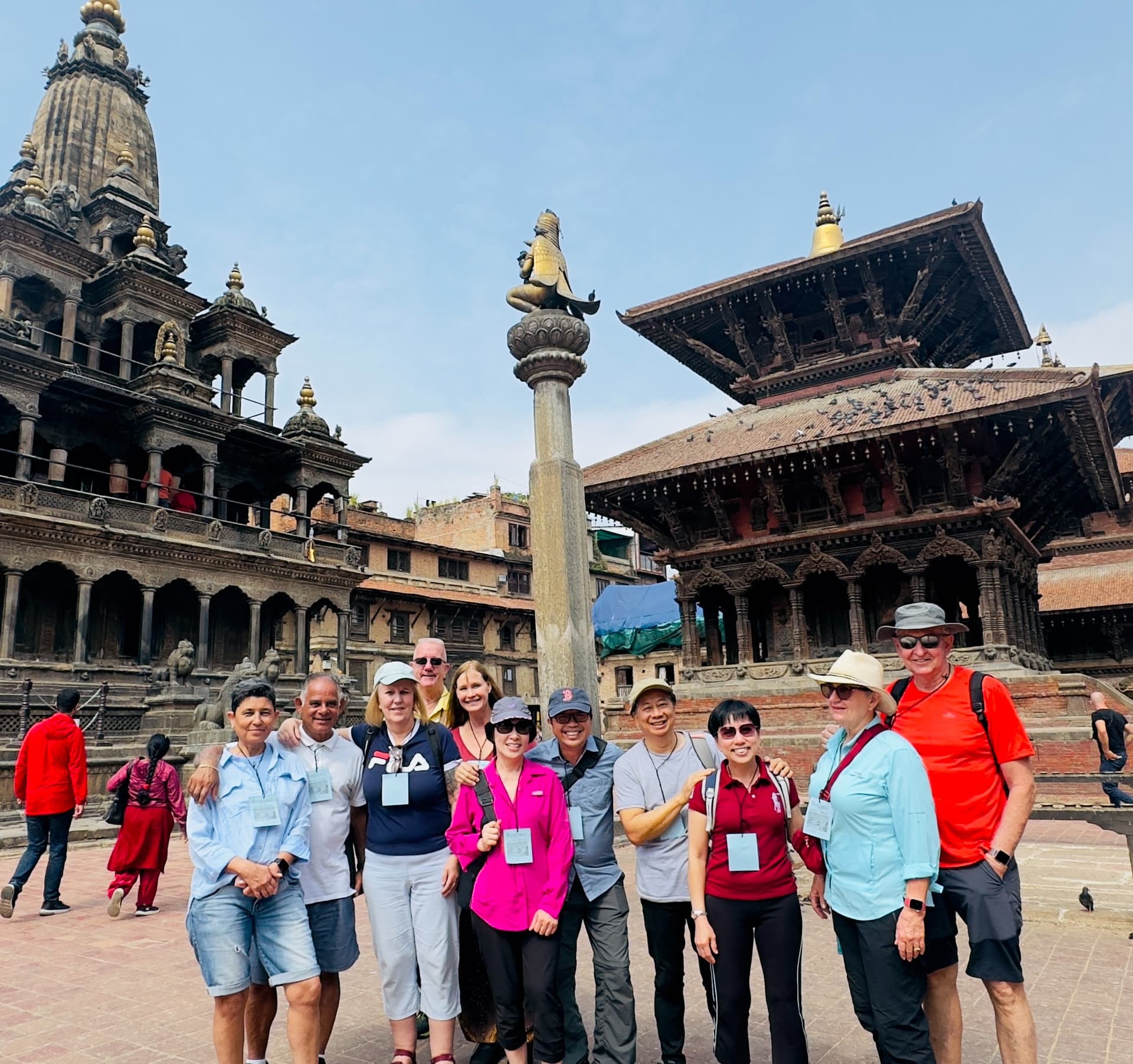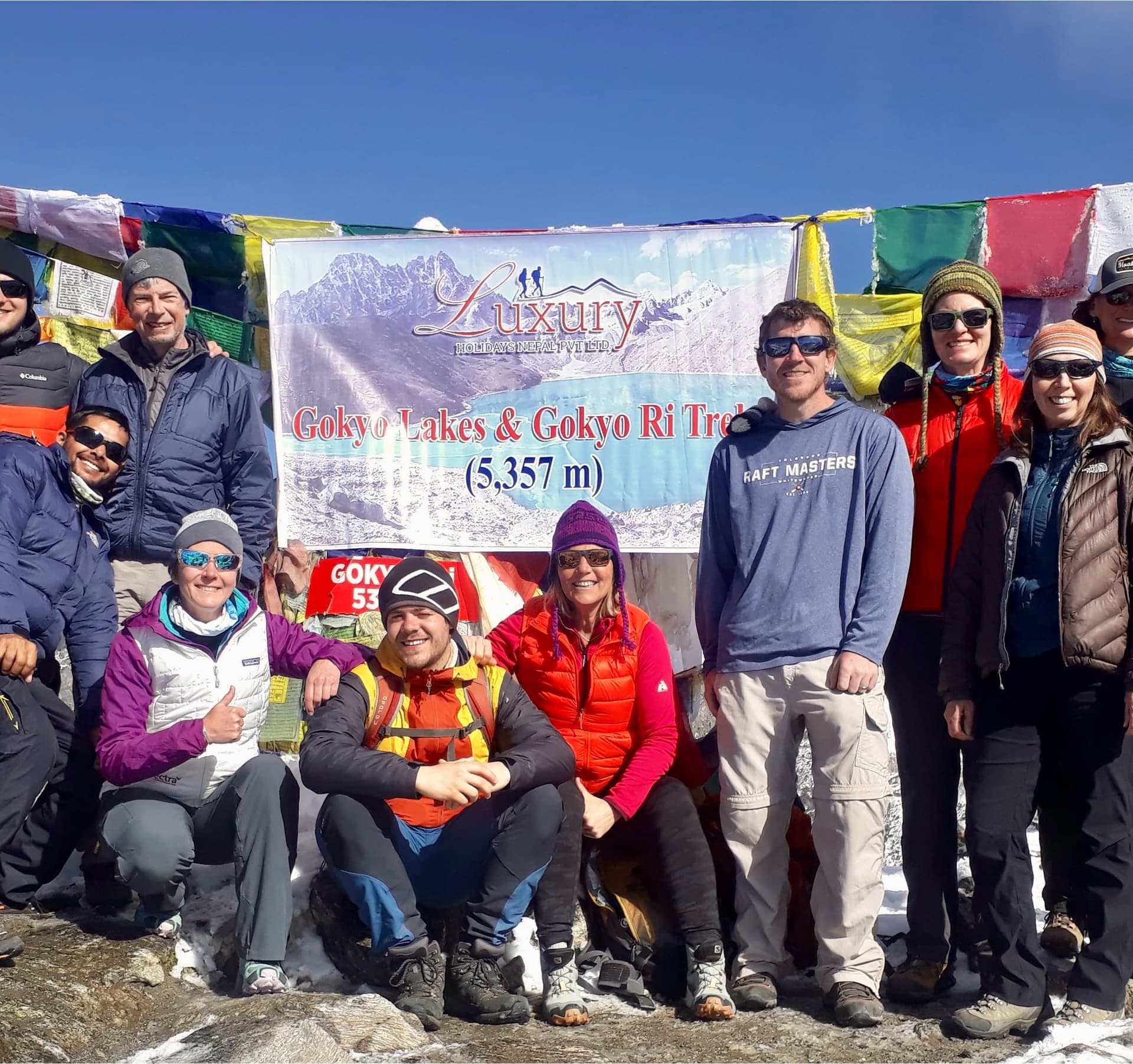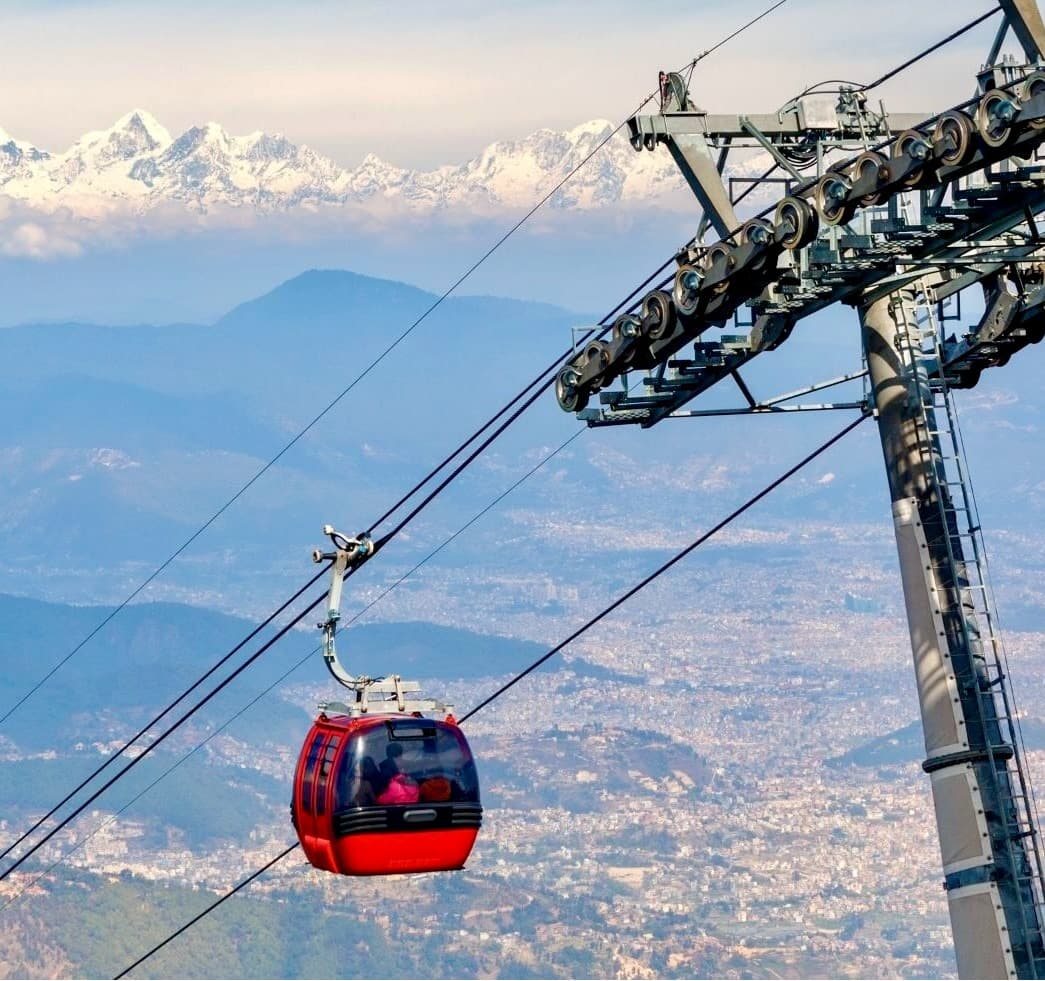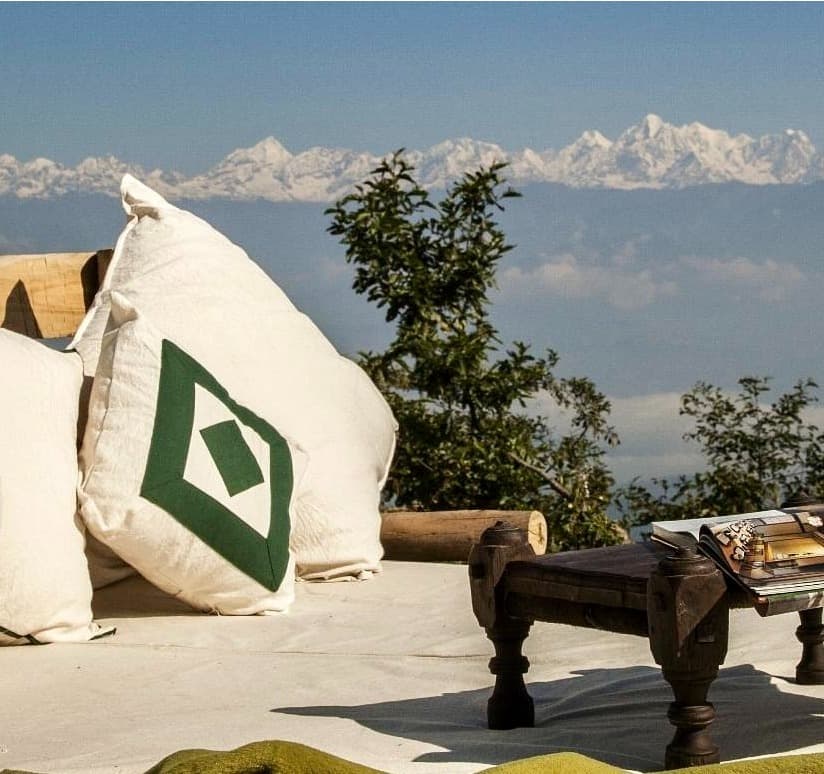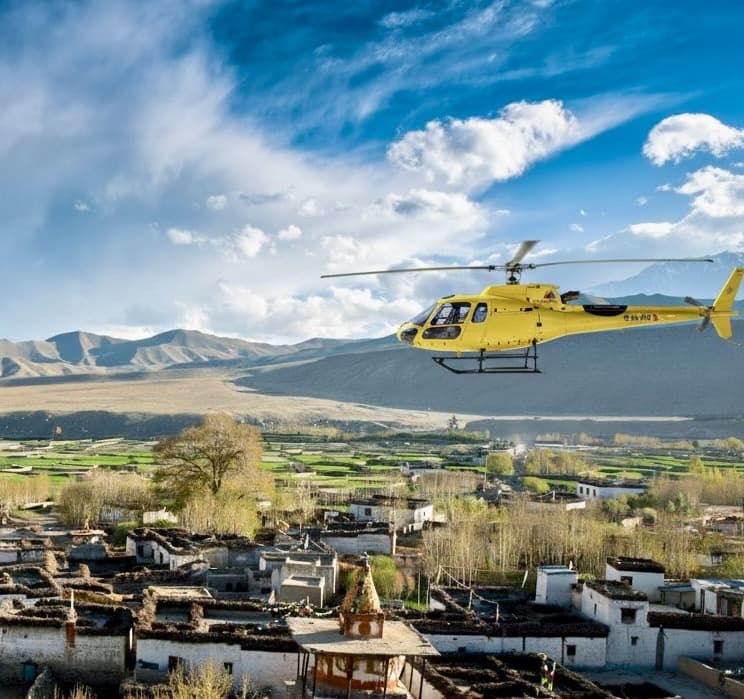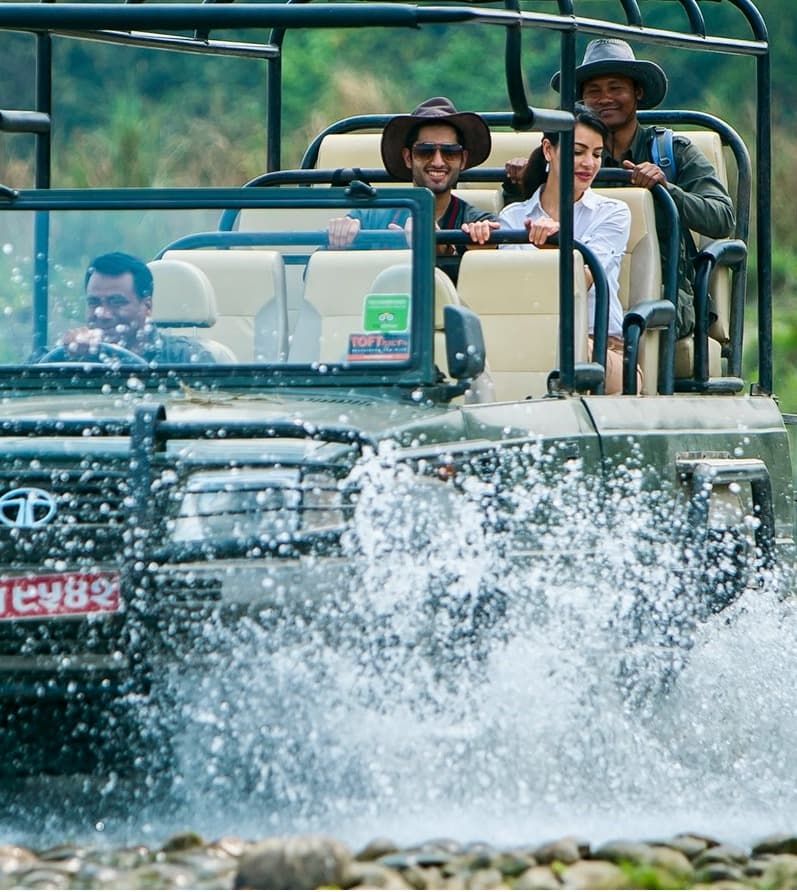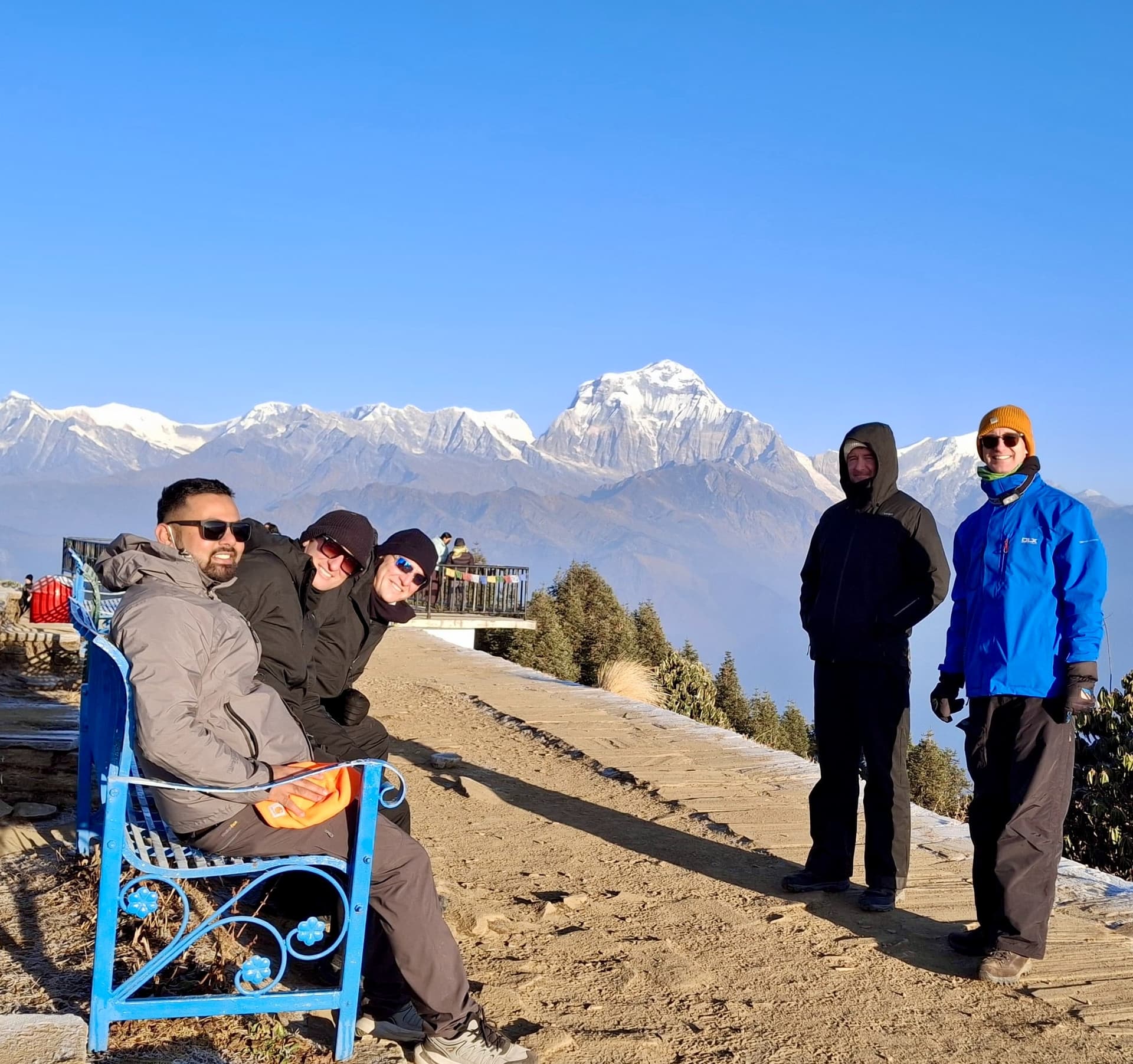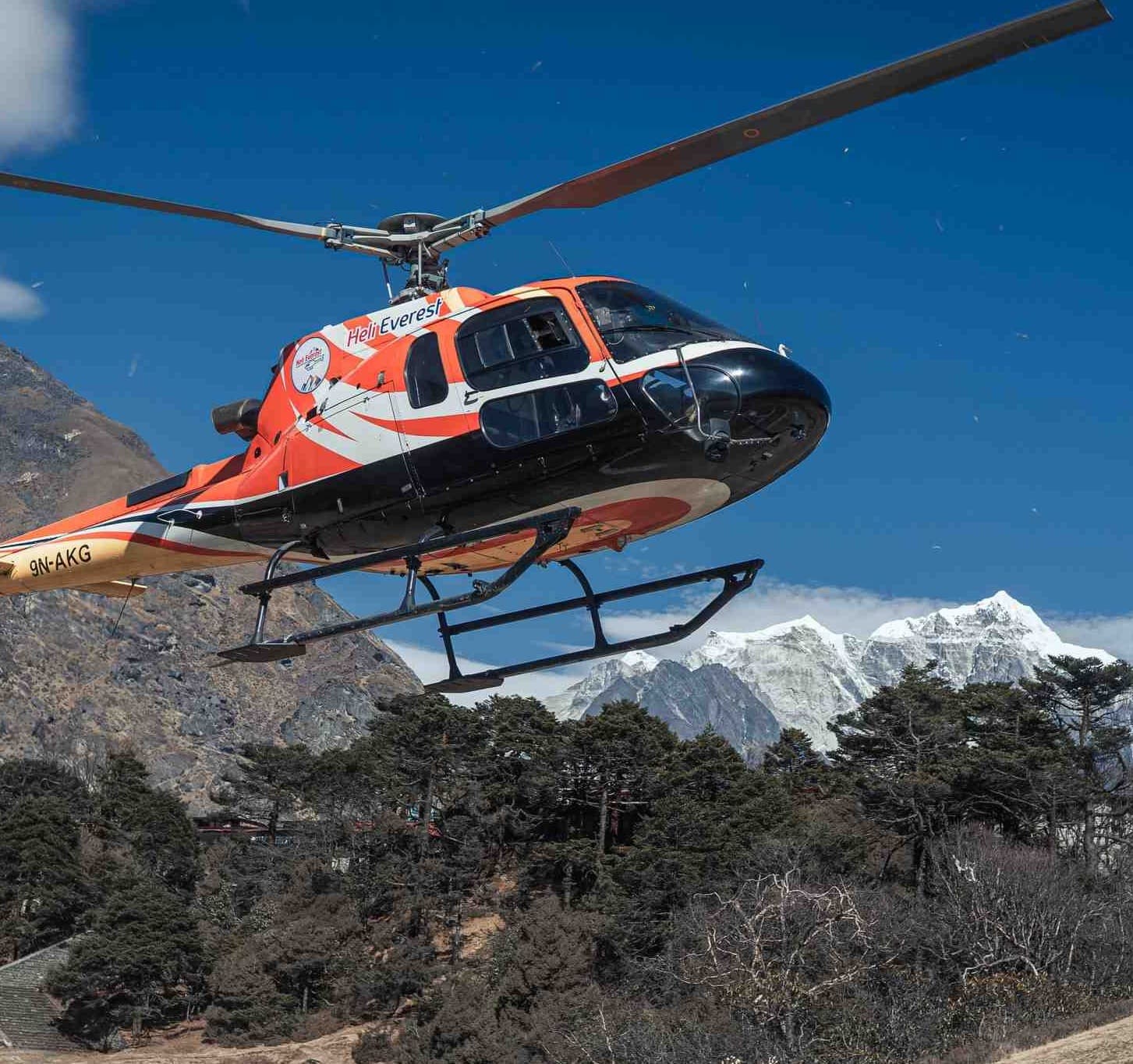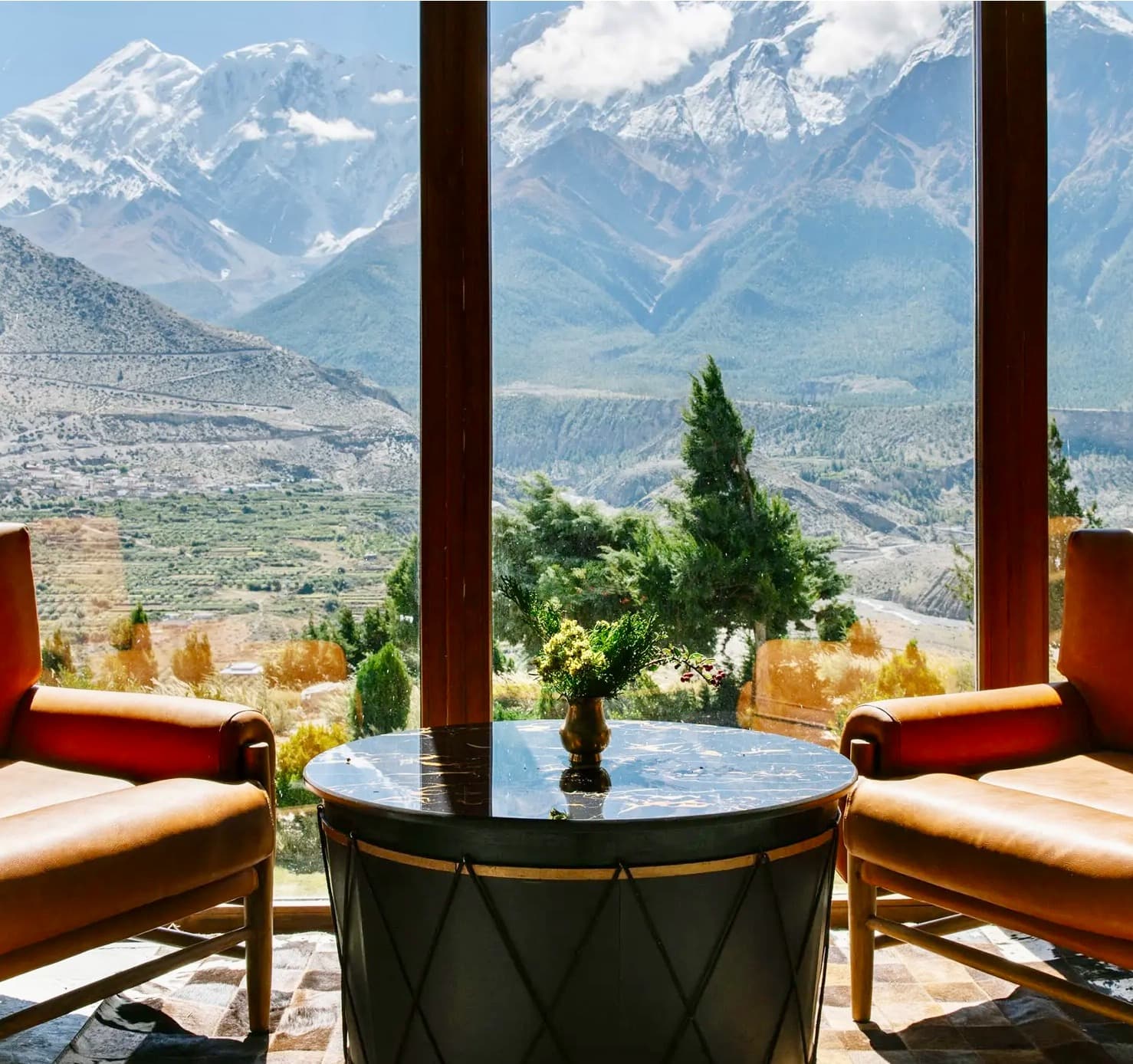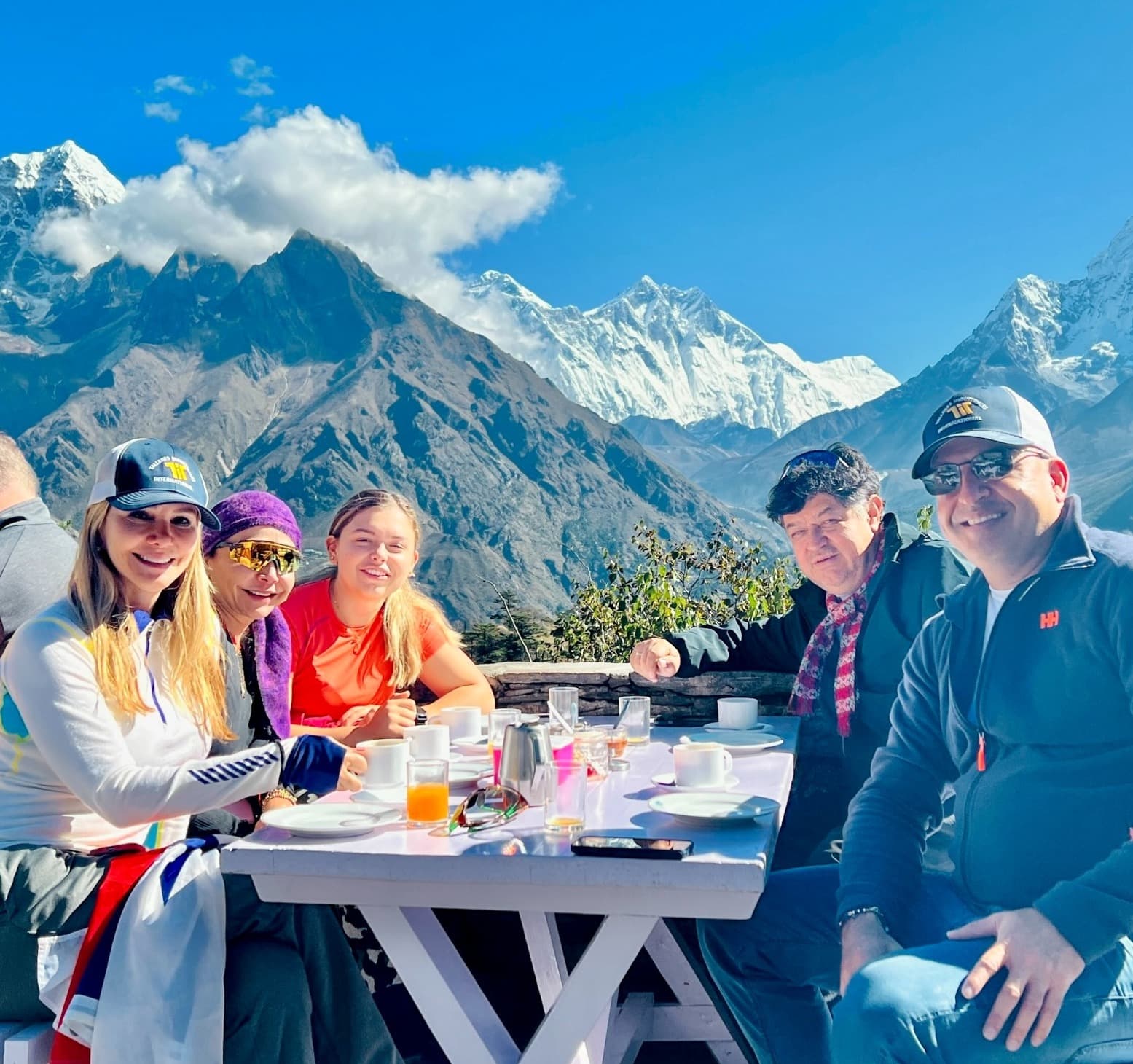Nepal Photography Tours and Trekkings by Luxury Holidays Nepal offer a perfect fusion of breathtaking landscapes, rich cultural experiences, and expertly curated itineraries tailored for both amateur and professional photographers. From the snow-draped peaks of the Himalayas to the vibrant traditions of the Kathmandu Valley, every moment in Nepal presents a frame-worthy opportunity. Our tours are designed to take you beyond the usual trails—capturing golden sunrises over Everest, timeless villages untouched by modernity, colorful festivals, sacred temples, and diverse wildlife. With the support of experienced guides and local insights, Luxury Holidays Nepal ensures that your photography journey is not only visually inspiring but also immersive, comfortable, and deeply enriching. Whether you're aiming for high-altitude vistas or soulful portraits, this is where the lens meets adventure.
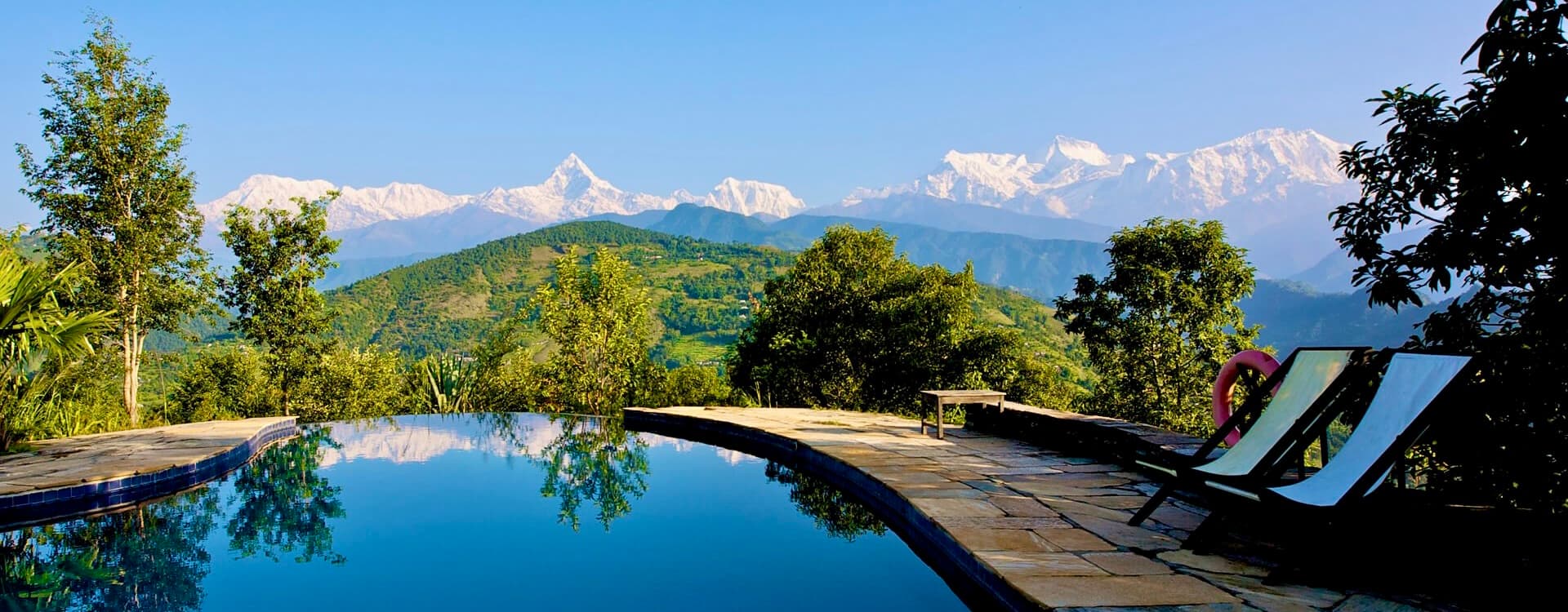
Nepal Photography Tours and Trekkings
Tripadvisor
5.0928 reviewsGoogle
4.8114 reviewsFacebook
4.1 recommend44 Reviews- Trusted by50K plus traveller
Packages
- Top Seller
 $1699$13995.0 from 20 reviews
$1699$13995.0 from 20 reviewsAdventure Sports Tour with Rafting, Jungle Safari and Mountain Flight
9 Nights 10 Days
Nepal Photography Tours and Trekkings: Everything You Need to Know
Nepal Photography Tours and Trekkings: Capture the Soul of the Himalayas
Have you ever gazed at a photograph of Nepal's towering peaks or vibrant cultural scenes and felt an irresistible pull to capture such magic through your own lens? At Luxury Holidays Nepal, we believe that photography in Nepal isn't just about taking pictures—it's about capturing moments that transform into lifelong memories. The unique interplay of light across the Himalayan ranges, the authentic smiles of locals in remote villages, and the golden glow of ancient temples at sunrise all create a photographer's paradise that's unmatched anywhere else on earth.
Whether you're a professional photographer seeking that award-winning shot or an enthusiast wanting to improve your skills in one of the world's most photogenic destinations, our specially curated photography tours combine the thrill of adventure with the creative pursuit of exceptional imagery. We've designed experiences that take you beyond the ordinary tourist path, positioning you in perfect spots when the light is just right, with expert guides who understand both the terrain and the technical requirements of capturing Nepal's diverse landscapes. In this comprehensive guide, we'll walk you through everything from the best photography hotspots and trekking routes to essential gear recommendations, seasonal considerations, and cultural etiquette, ensuring you return home with not just photographs but artistic treasures that tell the story of Nepal's breathtaking beauty.
Capturing Nepal's Majestic Landscapes: Ultimate Photography Hotspots
Himalayan Peaks: Capturing the World's Highest Mountains
Ever stood at the base of something so massive it makes you feel like an ant? That's exactly what happens when we position our cameras in front of Nepal's mighty Himalayan peaks. We've spent countless dawns shivering in the cold, waiting for that perfect moment when the first light hits Everest's summit, turning it into a golden beacon against the deep blue sky.
The magic of photographing these giants isn't just about their size. It's about their moods. Sometimes they're crystal clear, showing every ridge and glacier in perfect detail. Other times they play hide-and-seek with the clouds, revealing just a tantalizing glimpse of what lies beyond.
Our favorite spots for mountain photography include:
- Gokyo Ri (5,357m): Offers sweeping panoramas of four 8,000m+ peaks including Everest
- Poon Hill: Perfect for sunrise shots of the Annapurna range
- Kala Patthar: The classic Everest viewpoint that never disappoints
Pro tip: We always pack neutral density filters for those midday shoots when the mountain light gets harsh. And remember, mountains create their own weather patterns. We've seen perfect conditions change in minutes, so always be ready to shoot when the view appears.
Terraced Fields and Rural Villages: Documenting Traditional Lifestyles
Nepal's countryside tells stories our cameras can't resist. The terraced fields carved into impossibly steep hillsides aren't just agricultural marvels—they're living canvases that change colors with the seasons.
We make a point to visit during rice planting season when the terraces become mirrors reflecting the sky, or during harvest when they turn golden. The Annapurna region offers some of our favorite terraced landscapes, but the less-visited eastern regions around Ilam give us those rare shots few others bring home.
Village life gives us our most authentic images. The morning routines as smoke rises from cooking fires, elderly folks spinning prayer wheels, children playing with homemade toys—these quiet moments capture Nepal's soul better than any postcard shot.
Camera settings matter here. We shoot with wider apertures (f/2.8-4) to isolate subjects against busy backgrounds, and we're not afraid to bump up ISO in dimly lit homes where some of the most genuine moments happen.
Getting these shots takes patience and respect. We always ask permission before photographing people up close, learn a few basic Nepali phrases, and sometimes show villagers their images on our camera screens—the resulting smiles are often better than the original photos!
Ancient Temples and Sacred Sites: Photographing Cultural Heritage
Stepping into Kathmandu's Durbar Square or Bhaktapur's ancient courtyards feels like time travel, and our cameras help us bring that feeling home. Nepal's sacred sites present unique photography challenges we've learned to love.
The intricate wood carvings on temple struts tell stories from Hindu and Buddhist mythology, but capturing their details requires patience and careful composition. We've found that early morning light (before 8 am) brings out the textures best, creating dramatic shadows that give depth to these centuries-old masterpieces.
Color explodes everywhere in Nepal's religious sites. Prayer flags flutter against mountain backdrops, monks in burgundy robes move through golden temple doorways, and festival celebrations paint the streets with powdered colors and flower offerings.
Some photography tips we've learned the hard way:
- Always check if photography is permitted inside temples (many prohibit it)
- Remove shoes when entering sacred spaces
- Use a lens hood to reduce flare when shooting gilded Buddha statues
- Carry a small flashlight to illuminate dark corners of ancient structures
The most powerful images often come when we slow down, observe ceremonies without intruding, and wait for moments that reveal the deep connection between Nepali people and their spiritual traditions.
Wildlife Photography Opportunities in Nepal's National Parks
Nepal packs extraordinary biodiversity into its relatively small area, and we've spent weeks tracking some of its most elusive creatures. Chitwan National Park remains our favorite hunting ground (with cameras only, of course) for the magnificent Bengal tiger and greater one-horned rhinoceros.
Nothing beats the adrenaline rush of spotting a rhino through the morning mist while balancing on an elephant's back or from a jeep safari. The key is patience—we typically spend at least 3-4 days in any park to increase our chances of meaningful wildlife encounters.
For bird photographers, Nepal is heaven. Over 900 species call this country home, from the colorful Himalayan Monal to massive vultures riding thermals above mountain passes. Koshi Tappu Wildlife Reserve gives us our best bird photography opportunities, especially during migration seasons.
Equipment considerations matter more for wildlife than any other subject in Nepal:
- We never travel without our longest telephoto lenses (minimum 400mm)
- Monopods offer better mobility than tripods on safari vehicles
- Fast SD cards handle those unexpected burst shots when animals suddenly appear
- Extra batteries are essential—charging opportunities can be limited in remote areas
The real secret to wildlife photography in Nepal? Hiring local guides who know animal movement patterns and behavior. They've helped us find snow leopard tracks in Sagarmatha National Park and red panda territories in Langtang that we'd never have discovered alone.
Top Photography Trekking Routes for Stunning Imagery
Everest Base Camp Trek: Iconic Photo Opportunities
Picture this: standing at 5,364 meters with the world's highest peak towering before you. The Everest Base Camp trek isn't just a hike—it's a photographer's playground. We've guided countless photographers along this route, watching their eyes widen at that first glimpse of Everest's peak through the prayer flags at Namche Bazaar.
Morning light at Kala Patthar offers the money shot—golden rays illuminating Everest while alpenglow paints the surrounding peaks in impossible pinks and oranges. Our tip? Get there 30 minutes before sunrise. Yeah, it's brutally cold, but that pre-dawn blue light creates depth that most tourists miss.
Don't overlook the Khumbu Icefall shots either. This massive frozen waterfall of blue ice creates abstract patterns that pop dramatically in your frame. We always recommend a polarizing filter here to cut glare and enhance those deep blue tones.
Annapurna Circuit: Diverse Landscapes and Cultural Encounters
The Annapurna Circuit is basically every photography genre rolled into one epic trek. We start in lush rice paddies and banana trees, then climb through rhododendron forests, alpine meadows, and finally into stark high-altitude moonscapes.
Tilicho Lake at 4,919 meters offers mirror reflections that'll make your Instagram followers think you've discovered heaven. The real secret spot? The prayer wheel corridor in Braga village. The low light filtering through cracks creates these dramatic shafts that transform ordinary portraits into magazine-worthy shots.
Cultural photography shines here too. The villages of Manang and Marpha give us access to intimate moments with locals—weathered faces that tell stories better than any travel blog could. We've found that offering to show villagers their photos on your camera screen breaks down barriers instantly.
Langtang Valley: Off-the-Beaten-Path Visual Treasures
Langtang might not have Everest's fame or Annapurna's variety, but photographers who know, know. This valley delivers isolation and authenticity that's increasingly rare. The devastating 2015 earthquake changed the landscape, and now we witness something unique—nature's rebirth alongside human resilience.
Kyanjin Gompa's traditional houses framed against snow-capped peaks create a composition that's both powerful and intimate. We always time our arrival for the golden hour when the valley glows like it's lit from within.
Wildlife photographers, this is your spot. We regularly spot Himalayan tahr, langur monkeys, and, if you're supremely lucky, the elusive red panda. Pack that long lens!
Upper Mustang: Capturing Tibet-like Landscapes and Ancient Culture
Upper Mustang feels like stepping into another time. This former kingdom bordering Tibet remained closed to outsiders until 1992, which explains why it's photography gold—virtually unchanged for centuries.
The walled city of Lo Manthang offers what we call "photo density"—every direction you point your camera reveals something extraordinary. Eroded cliff faces in impossible ochre tones. Ancient gompas with intricate mandalas. Locals in traditional dress that isn't just for tourists.
Light here is different—thinner, clearer, more dramatic. We've found that even amateur photographers capture professional-quality images simply because the environment does half the work. The Tiji Festival transforms your photography from landscape to storytelling as masked dancers perform ancient rituals against medieval backdrops.
Manaslu Circuit: Photographing Untouched Mountain Scenery
Manaslu feels like Annapurna did 20 years ago—raw, undeveloped, genuine. We love watching photographers' faces when they realize there's no jostling for the perfect angle here. You'll often have viewpoints entirely to yourself.
Larkya La Pass (5,160m) delivers sweeping panoramas that simply don't fit in a single frame. We always recommend practicing panorama techniques before this trek—you'll use them daily. The sunrise from Dharamsala (Larkya Phedi) presents mountains emerging from cloud seas, creating depth that makes even phone cameras produce wall-worthy art.
Don't miss the traditional villages of Sama and Samdo. The light filtering through stone windows in these settlements creates natural spotlights on spinning wool, cooking fires, and centuries-old Buddhist practices. We find that black and white photography works magic here, stripping images to their emotional essence.
Essential Photography Gear and Preparation for Nepal's Varied Conditions
Camera Equipment for High-Altitude Photography
Capturing Nepal's breathtaking landscapes means dealing with some serious altitude challenges. We've learned (the hard way) that not all camera gear performs well above 3,000 meters. Batteries drain faster in cold mountain air – sometimes disappearing to half capacity overnight! That's why we always pack at least 3-4 extra batteries and keep them warm inside our jackets.
Our go-to cameras for Nepal treks are weather-sealed DSLRs or mirrorless bodies that can handle dust and occasional moisture. The Sony A7 series, Nikon Z series, and Canon R series have served us incredibly well on our photography tours through the Himalayas.
A stable tripod is non-negotiable for those crystal-clear night sky shots of stars above Annapurna or Everest. Carbon fiber options give you stability without the weight penalty – your shoulders will thank you after a day of trekking!
Weather-Proofing and Protection in Diverse Climates
Nepal throws everything at you – from humid jungles to bone-dry mountain air to sudden downpours. We never leave home without:
- Rain covers for our camera bags
- Silica gel packets to combat humidity
- Clear UV filters for lens protection (easier to replace a scratched filter than a scratched lens!)
- Microfiber cloths for wiping condensation when moving between temperature extremes
- Waterproof stuff sacks for extra protection inside our backpacks
The transition from warm teahouses to frigid outdoor environments creates condensation that can damage electronics. Our trick? We keep our gear in sealed bags when moving between different temperature zones, allowing gradual acclimatization.
Packing Light While Maintaining Quality Gear
The eternal photographer's dilemma: bringing everything vs. carrying everything! After numerous Nepal photography treks, we've refined our approach to balancing quality and weight.
Instead of packing five specialty lenses, we've found that 2-3 versatile options cover 95% of shooting scenarios. A quality zoom like a 24-70mm f/2.8 paired with a wide-angle zoom (16-35mm) handles most landscape situations beautifully.
For those worried about weight, here's our priority list:
- Camera body with weather sealing
- Versatile zoom lens
- Lightweight tripod
- Extra batteries and memory cards
- Basic cleaning kit
Everything else is a luxury! We've seen photographers struggle with 15kg of gear while missing shots because they were too exhausted to climb that last ridge for the perfect angle.
Recommended Lenses for Landscape, Portrait, and Cultural Photography
Nepal offers incredible diversity in photography subjects, from vast mountain vistas to intimate cultural portraits. Here's what we bring to capture it all:
For landscapes: A wide-angle zoom (16-35mm) is essential for those expansive Himalayan panoramas. The wider field of view helps convey the immense scale of the mountains.
- For portraits and culture: A 50mm or 85mm prime lens with a wide aperture (f/1.8 or wider) lets you create beautiful portraits with creamy backgrounds, perfect for capturing the weathered faces of mountain people or colorful festival participants.
- For versatility: A 24-70mm f/2.8 is our workhorse lens – sharp enough for landscapes yet flexible enough for impromptu portraits and cultural documentation.
- For those special moments: If you can justify the weight, a 70-200mm f/4 telephoto zoom lets you compress distant mountain layers and capture wildlife like langur monkeys or colorful monal pheasants in the lower elevations.
Luxury Photography Tours: Comfort Meets Creativity
Helicopter Photography Expeditions to Remote Locations
Imagine this: soaring above Nepal's majestic landscapes, camera in hand, capturing angles that few photographers ever get to experience. That's exactly what we offer with our helicopter photography expeditions.
We take you beyond the beaten path to remote locations that would otherwise require days of trekking. Want to photograph the sunrise at Everest Base Camp without the two-week trek? We've got you covered. Need that perfect shot of isolated monasteries perched on seemingly impossible cliffs? No problem.
Our helicopters are configured specifically for photographers, with removable doors (optional, of course) for crystal-clear shooting and specially designed camera mounts to ensure stability during flight. Each expedition includes a photography expert who knows exactly which angles work best at different times of day.
Some of our most popular heli-photo destinations include:
- The hidden lakes of Upper Mustang
- Isolated Sherpa villages near Makalu
- The rarely photographed western face of Annapurna
- Secret valleys of Langtang that can't be accessed by foot
Luxury Lodges and Accommodations for Photographers
After a day of intensive shooting, our photographers deserve more than a basic teahouse. We've partnered with Nepal's finest luxury lodges and boutique hotels that understand the unique needs of serious photographers.
Each accommodation we select offers:
- 24-hour electricity with dedicated charging stations for camera equipment
- In-room dehumidifiers to protect sensitive gear
- Secure storage facilities
- High-speed Wi-Fi for backing up your precious shots
- Post-processing spaces with calibrated monitors (in select locations)
From the Himalayan-view suites at Dwarika's in Kathmandu to the tranquil luxury of Tiger Mountain Lodge in Pokhara, we ensure your downtime is as exceptional as your shooting time.
Our favorite property? The newly opened Photography Retreat in Nagarkot, designed by photographers for photographers, with rooms named after famous Nepal photographers and walls adorned with their iconic images. Pure inspiration.
Private Guides and Porters for Photography Equipment
Photography gear is heavy—we get it. That's why we assign specialized porters trained specifically in handling delicate equipment. Unlike standard trekking companies, our porters use custom-designed camera carrying systems with waterproofing, shock absorption, and proper weight distribution.
Each photography expedition includes:
- A personal photography guide who knows exactly where to position you for the best shots
- Dedicated equipment porters (1 porter for every 15kg of gear)
- A photography assistant to help with reflectors, light stands, and other setup needs
Our guides aren't just trek leaders—they're photographers themselves, intimately familiar with how light plays across Nepal's landscapes throughout the day. They'll wake you before dawn for that perfect morning glow and know exactly which ridge offers the most dramatic sunset silhouettes.
Customized Itineraries Based on Photographic Interests
No two photographers are alike. Some chase portraits, others landscapes. Some need hours with a single temple, others prefer capturing various scenes. That's why we never offer one-size-fits-all tours.
We build every itinerary around your specific photographic vision:
- Wildlife photographers: We'll time your visits to Chitwan or Bardia National Parks during optimal sighting periods
- Architecture enthusiasts: Extended time in Bhaktapur, Patan, and lesser-known temple complexes
- Cultural photographers: Access to festivals, ceremonies, and authentic cultural experiences with appropriate permissions secured in advance
- Landscape specialists: Scheduling around ideal light conditions, with flexibility to extend stays when the weather creates magic
Before finalizing any itinerary, we conduct a detailed consultation to understand your equipment, physical capabilities, and visual goals. Want to spend three extra days in a remote village because you're working on a photo essay? We make it happen.
Seasonal Photography Guide: When to Capture Nepal's Best Light
Spring: Rhododendron Blooms and Clear Mountain Views
Nothing quite matches the magic of Nepal in spring. From March to May, we witness the hills transform into a canvas of reds, pinks, and whites as rhododendrons (Nepal's national flower) burst into bloom. This explosion of color against the backdrop of snow-capped mountains creates photography opportunities that are simply unmatched.
The clarity of air during spring gives us those jaw-dropping mountain shots that photographers dream about. Mornings typically offer the clearest views, so we always recommend early starts for our photography treks. The soft, golden light at dawn illuminates the Himalayas in ways that make even amateur photographers look like pros.
Spring also brings comfortable temperatures – not too hot in the lowlands and not too cold in the highlands. We can spend hours setting up the perfect shot without battling extreme weather conditions.
Wildlife photographers will appreciate the increased activity as animals emerge from winter. Birds are particularly active during mating season, making spring ideal for wildlife photography in places like Chitwan National Park.
Monsoon: Dramatic Clouds and Vibrant Green Landscapes
Most tourists avoid Nepal during monsoon (June to August), but we've discovered this is actually when some of the most dramatic shots happen. The interplay between massive storm clouds and mountain peaks creates moody, atmospheric images that stand out from typical sunny-day photography.
The landscapes transform completely during these months. Terraced fields turn vibrant green, waterfalls reach their thunderous peak, and the countryside bursts with life. Every shade of green you can imagine appears across the hills and valleys.
We've found that between downpours, the clouds often part to reveal stunning views. These brief windows offer unique lighting conditions that create otherworldly images. The rain-washed air provides exceptional clarity when the skies do clear.
For photographers seeking authenticity, monsoon season shows a different Nepal – locals going about daily life amid the rains, farmers working in lush fields, and fewer tourists in your shots. The dramatic weather itself becomes a compelling subject, with lightning storms over the mountains creating spectacular night photography opportunities.
Autumn: Crystal Clear Skies and Golden Light
Autumn (September to November) is our favorite season for photography in Nepal, and for good reason. The monsoon has washed away dust and pollution, leaving behind the clearest skies of the year. Mountain visibility reaches its peak, with sharp, defined outlines of the Himalayas visible for hundreds of miles.
The quality of light during autumn is simply extraordinary. The sun sits at an angle that bathes the mountains in golden hues during sunrise and sunset, creating that magical alpine glow photographers chase. We've found that even midday shots look remarkable due to the crystal-clear atmosphere.
The landscape transforms with autumnal colors, especially in regions like Dolpo and Upper Mustang, where the barley fields turn golden against the stark mountain backdrop. The contrast between blue skies, white peaks, and golden valleys creates a photographer's paradise.
Cultural photographers will appreciate the timing – major festivals like Dashain and Tihar happen during autumn, offering incredible opportunities to capture Nepal's living traditions. Villages come alive with celebrations, providing authentic cultural photography opportunities you won't find any other time of year.
Winter: Snow-Capped Peaks and Fewer Tourists
Winter photography in Nepal (December to February) offers something special for those willing to brave the colder temperatures. The mountains receive fresh snow, creating pristine white peaks against deep blue skies – a contrast that makes for striking imagery.
We love winter for the quality of light. The low-angle winter sun creates long shadows and dramatic lighting effects across the landscape. Morning and evening golden hours last longer, giving us extended periods for those perfect shots.
At lower elevations, clear winter days offer the most distant mountain views of the year. From Kathmandu Valley, the entire Himalayan range appears on the horizon – something rarely visible during other seasons.
The absence of crowds means we can capture iconic locations without fighting for space or waiting for tourists to clear from our frames. Places like Poon Hill or Everest Base Camp, normally crowded with trekkers, become peaceful settings for contemplative landscape photography.
For wildlife photographers, winter concentrates animals around remaining water sources, making them easier to spot and photograph. Birds migrating from colder regions to the north also provide unique wildlife photography opportunities throughout Nepal's lower elevations and national parks.
Cultural Photography Etiquette and Engaging with Locals
Respectful Approaches to Portrait Photography
We've learned through years of experience that photographing locals in Nepal requires a thoughtful approach. The golden rule? Always ask permission first. A smile, a gesture with your camera, or learning a few Nepali phrases like "Tasbir khichna milcha?" (May I take your photo?) goes a long way.
When someone agrees to be photographed, we take time to connect with them. A brief conversation or showing them the photos you've taken builds trust and transforms the experience from a mere transaction into a meaningful exchange.
We also recommend offering something in return – not necessarily money (which can create problematic expectations), but perhaps a printed photo mailed later or sharing a meal together. Many of our photographers bring portable printers on tours, creating instant gifts that locals treasure.
Festivals and Celebrations: Capturing Authentic Moments
Nepal's festivals offer incredible photography opportunities, but they're not staged for tourists. We immerse ourselves in these celebrations, participating respectfully before raising our cameras.
The vibrant colors of Holi, the intricate traditions of Dashain, or the glowing lamps of Tihar – these moments tell Nepal's story. But we're careful to understand the significance behind these celebrations first.
We've found that patience pays off. Rather than rushing for the "perfect shot," we observe, appreciate, and then capture the natural flow of events. Sometimes, this means putting the camera down entirely and simply experiencing the festival alongside locals.
Building Relationships for Intimate Cultural Photography
The most compelling cultural photographs emerge from genuine connections. On our longer photography tours, we revisit the same communities multiple times, building relationships that transcend the tourist-subject dynamic.
We encourage sharing photos with your subjects – the joy on someone's face when they see themselves beautifully captured is worth every effort. Several of our photographers maintain relationships with Nepali families for years, documenting their changing lives and deepening cultural understanding.
When photographing artisans or workers, we take time to understand their craft. Learning about traditional weaving techniques or pottery-making enhances both our photographs and our appreciation of Nepal's rich cultural heritage.
Understanding When Not to Photograph
We've learned the importance of recognizing when to lower our cameras. Some religious ceremonies, particularly funeral rites or certain temple rituals, are deeply private. Photographing these moments can be intrusive and disrespectful.
Inside many temples, photography is prohibited or restricted. We always check with local guides or temple authorities before taking photos, and we respect all posted signs and verbal instructions.
Beyond formal restrictions, we're sensitive to vulnerable situations. Poverty shouldn't be exploited for dramatic imagery. We're committed to photography that preserves dignity and tells honest, respectful stories about the people we encounter.
Remember that consent can be withdrawn. If someone appears uncomfortable or changes their mind about being photographed, we immediately respect their wishes. The relationship always matters more than the photograph.
Post-Processing Tips for Nepal's Unique Lighting Conditions
Handling High-Contrast Himalayan Scenes
Nepal's mountains throw some serious lighting challenges our way. One minute you're shooting in bright sunshine, the next you're dealing with deep mountain shadows. We've learned a few post-processing tricks to handle these extremes.
First up, bracketing exposures is your friend. We always shoot 3-5 exposures of those dramatic Himalayan vistas, then blend them in Lightroom or Photoshop. The magic happens when you pull details from both the bright sky and shadowy valleys.
For single exposures, we rely heavily on the graduated filter tool in Lightroom. Dragging it across the horizon line lets us balance that bright mountain sky with the darker foreground. A little goes a long way – pull those highlights down about 10-15% and lift shadows just enough to reveal details.
Quick Tip: When processing sunrise shots of Annapurna or Everest, we often use the radial filter tool centered on the peak to draw the viewer's eye naturally to the mountain.
Color Grading for Nepal's Vibrant Landscapes
Nepal's colors are something else – prayer flags popping against azure skies, rhododendron forests blazing red against white peaks. Getting these colors right in post takes a delicate touch.
We've developed a custom color profile for Nepal's unique light. The secret? Boosting vibrance rather than saturation maintains the intensity without making things look fake. Around +15 vibrance and -5 saturation usually does the trick.
For those gorgeous golden hour shots in the Himalayas, we warm up the temperature slightly while keeping the highlights cooler. This creates that magical alpine glow that Nepal is famous for.
The HSL panel becomes our playground for Nepal's landscapes. We often:
- Boost blues for those crystal-clear mountain skies
- Enhance greens slightly for the lush valleys
- Add luminance to yellows for those glowing sunset moments on the peaks
- Creating Compelling Photo Stories from Your Journey
The best Nepal portfolios tell a story – they're not just pretty pictures stacked together. We approach each trekking route as a narrative arc with a beginning, middle, and climax.
When culling images, we ask: "What emotion did we feel here?" Was it the wonder of first glimpsing Machapuchare? The connection with a smiling Sherpa elder? The triumph of reaching a high pass? These emotional anchors become the backbone of our story.
We typically organize images in sets:
- Scene-setting wide shots of villages and landscapes
- Mid-range cultural encounters and activities
- Detail shots of textures, food, and small moments
- Portrait series of the incredible people we meet
Sequencing matters enormously. We start with establishing shots, build through the journey's challenges, peak with those jaw-dropping mountain moments, and close with reflective, intimate images that show how the journey changed us.
Organizing and Archiving Your Nepal Portfolio
After multiple Nepal trips, we've learned that organization is crucial. Our workflow goes like this:
- Create location-based folders (Everest Base Camp, Annapurna Circuit, etc.)
- Sub-categorize by day/location (Day 3 - Namche Bazaar)
- Tag images with descriptive keywords (portrait, landscape, culture, mountain, specific peak names)
- For backup, we follow the 3-2-1 approach:
- 3 copies of all images
- 2 different storage types (external drive + cloud)
- 1 off-site backup (crucial when traveling)
For our Nepal collections, we create both full-resolution archives and optimized exports for different purposes:
- Web-optimized galleries (2000px long edge)
- Print-ready files (full resolution TIFFs)
- Social media cuts (square and vertical formats)
This system has saved us countless headaches and ensures our Nepal memories stay protected for years to come.
Nepal's breathtaking landscapes offer endless opportunities for photographers seeking to capture extraordinary imagery. Throughout this guide, we've explored the finest photography hotspots, recommended specialized trekking routes, and provided essential gear advice for navigating Nepal's diverse conditions. We've also highlighted our luxury photography tours that combine comfort with creative exploration, detailed the optimal seasons for capturing Nepal's magical light, and shared important cultural etiquette tips for respectful interaction with locals.
We believe that photography in Nepal is more than just taking pictures—it's about connecting with the majestic Himalayas, ancient cultures, and vibrant communities that make this country truly special. Whether you're planning your first photography adventure or returning to explore new perspectives, our team at Luxury Holidays Nepal is committed to helping you create unforgettable visual stories. Remember that mastering post-processing techniques for Nepal's unique lighting conditions will elevate your final images to truly represent the wonder you experienced. We invite you to pack your camera gear and join us on a journey that will not only enhance your photography portfolio but also transform your understanding of this remarkable Himalayan nation.
If you need any further information, please contact us by email: at [email protected], Phone: at +977- 985 100 5129 (WhatsApp)



